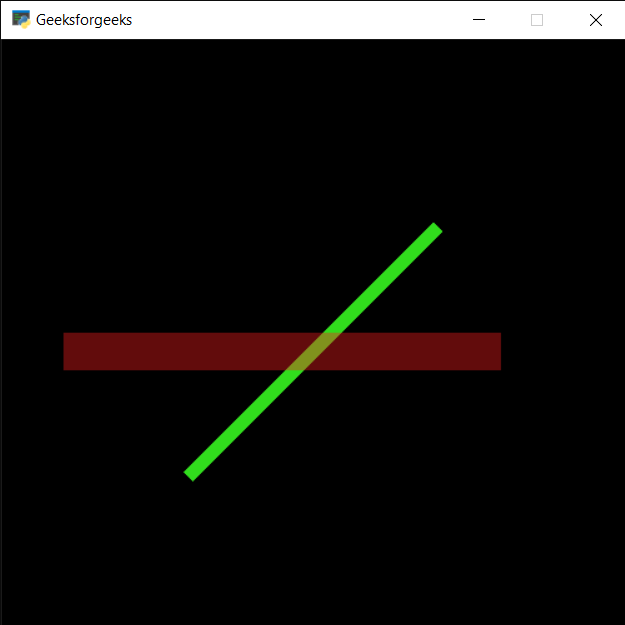En este artículo, veremos cómo podemos dibujar una línea en la ventana en el módulo PYGLET en python. Pyglet es una biblioteca fácil de usar pero poderosa para desarrollar aplicaciones GUI visualmente ricas como juegos, multimedia, etc. Una ventana es un objeto «pesado» que ocupa los recursos del sistema operativo. Las ventanas pueden aparecer como regiones flotantes o pueden configurarse para llenar una pantalla completa (pantalla completa). La forma de la línea espectral describe la forma de una característica, observada en espectroscopia, correspondiente a un cambio de energía en un átomo, molécula o ion. Las formas de línea ideales incluyen las funciones de Lorentzian, Gaussian y Voigt, cuyos parámetros son la posición de la línea, la altura máxima y la mitad del ancho. La línea se dibuja con la ayuda del módulo de formas en pyglet.
Podemos crear una ventana con la ayuda del comando que se indica a continuación.
# creating a window window = pyglet.window.Window(width, height, title)
Para crear la ventana, usamos el método Línea con pyglet.shapes
Sintaxis: formas. Línea (co_x1, co_y1, co_x2, co_y2, ancho, color = (50, 225, 30), lote = lote) Argumento:
toma el inicio y el final posición en forma de par de dos enteros, ancho de línea, color de línea y el último es objeto de lote
Retorno: Devuelve objeto Línea
A continuación se muestra la implementación.
Python3
# importing pyglet module import pyglet # importing shapes from the pyglet from pyglet import shapes # width of window width = 500 # height of window height = 500 # caption i.e title of the window title = "Geeksforgeeks" # creating a window window = pyglet.window.Window(width, height, title) # creating a batch object batch = pyglet.graphics.Batch() # properties of line # first co-ordinates of line co_x1 = 150 co_y1 = 150 # second co-ordinates of line co_x2 = 350 co_y2 = 350 # width of line width = 10 # color = green color = (50, 225, 30) # creating a line line1 = shapes.Line(co_x1, co_y1, co_x2, co_y2, width, color = (50, 225, 30), batch = batch) # changing opacity of the line1 # opacity is visibility (0 = invisible, 255 means visible) line1.opacity = 250 # creating another line with properties # x1, y1 = 50, 250 # x2, y2 = 400, 250 # color = red line2 = shapes.Line(50, 250, 400, 250, 30, color = (250, 30, 30), batch = batch) # changing opacity of the line2 # opacity is visibility (0 = invisible, 255 means visible) line2.opacity = 100 # window draw event @window.event def on_draw(): # clear the window window.clear() # draw the batch batch.draw() # run the pyglet application pyglet.app.run()
Producción :

Publicación traducida automáticamente
Artículo escrito por rakshitarora y traducido por Barcelona Geeks. The original can be accessed here. Licence: CCBY-SA